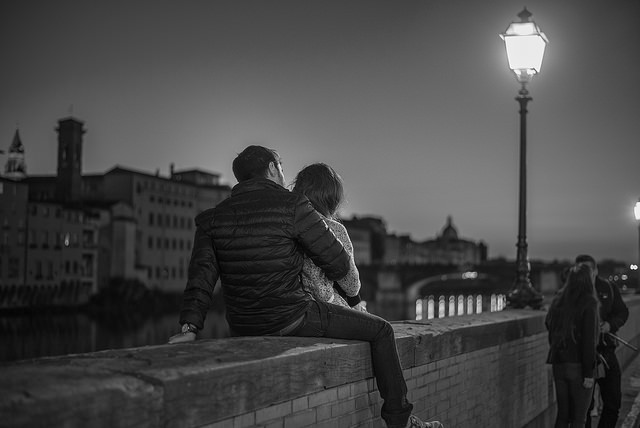“A single tiny light creates a space where darkness cannot exist. The light vanquishes the darkness. Try as it might, the darkness cannot conquer the light.” ~ Donald L. Hicks, Look Into The Stillness.
The Summer Solstice is a celebration of the longest day of sunlight of the year and the shortest night of darkness of the year.
Although we celebrate this day for being the longest day of light, the day after the solstice, days begin to get shorter and the nights begin to get longer once again. This is representative of finding a balance from the longer days of sunlight, through to the long days of darkness, which concludes when we reach the winter’s solstice.
The Solstice is the summer’s yin to the winter’s yang. A time where opposites are recognised and attention is paid to the fact that we need both the light and the dark to survive. We need reflections, opposites, mirrors and a balance so that we can constantly adjust and alter our paths slightly and then align again.
This Pagan myth celebrates the winter solstice being the birth of the Sun Child from his mother, The Goddess of Night, whilst during the Summer Solstice we celebrate the birth of the Dark Child from his mother, The Goddess of Sun. These two solstices are a representation of opposites.
The two children, the Dark Child and the Sun Child are twins: They are two parts of the Pagan Horned God who has both a dark side and a light side and Dark and Sun, are mirrors of one another. The Goddess of Summer and The Goddess of Winter are also twins.
From this we see that everything as a whole is a balance and that we are all a myriad of shades that make up one complete being.
Just as the darkness needs the light, the light needs the darkness. So that we can brightly shine and glow to our full extent, our darkness must also be present. So that we can see clearly in our darkness, we also need our own rays of light.
“The dance between darkness and light will always remain—the stars and the moon will always need the darkness to be seen, the darkness will just not be worth having without the moon and the stars.”
Both light and darkness must exist for us to be at one with our selves, with nature and with all that surrounds us. We are simply a reflection of the universe that also has a mixture of light and dark.
When we are afraid of either side of ourselves we will never fully explore and embrace exactly who we are. The sun does not fear the moon and the moon does not fear the sun, instead, they make way for one another and are each comfortable within their own setting, whilst knowing the other is performing a vital duty also. There is no fear, just a silent acceptance that balances the earth.
Some of the greatest lessons I have learned came from my time spent in darkness, and I learned things I could never have fully understood whilst standing in the light. Similarly when I have been in the light I have also learned profound lessons. Mostly though, I learned that I can’t stay on either side for too long. I also learned that just as the light on its own is not fully good for me, neither is the dark fully bad for me either.
If I am afraid of either part of myself, I will constantly live in fear, just as the day and night would do if they were also afraid of the other.
Dark and light are both required to make a whole, and when we embrace each of our shades, we can drive out fear and, in doing so, we will be able to embrace, love, accept and understand ourselves exactly as we are.
There is light and dark in everything and everyone and neither side is harmful when it is balanced out so that it waxes and wanes rhythmically rather than pushes and pulls against itself. No one is ever fully in the light or fully in the dark; we all have a mixture of both within us.
Carl Jung called this darkness our “shadow” and spoke of it being an unconscious aspect of the personality, which the conscious ego does not identify itself in. Jung explained that he believed that whatever we perceive as evil we deny in ourselves and these things then become a part of our hidden personality, our shadow.
Jung’s belief was that when this shadow was repressed it was at its most destructive and would manifest in psychological disturbances. Coming face-to-face with our shadow and realising that we need it so that we can balance ourselves was Jung’s belief that we can have a conscious and constructive relationship with it, rather than a negative one.
The solstice is the perfect and divine opportunity to balance and harmonise ourselves simply by understanding, loving, accepting and embracing ourselves so that we are limitless and open to our full potential.
We are reflections of the universe that surrounds us, an alchemical blend of darkness and light with both parts entirely in need of reflecting on the other.
The summer solstice is a time to celebrate and reclaim our light and dark sides so that we are no longer afraid of ourselves exactly as we are. We are all human and we all have this mixture within and when we shine the light on our darkness, and also allow our darkness to touch our light, we can find the balance and discover the route home to get to know, unravel, unhide, fully love and embrace each and every shade of ourselves.
“A candle can’t cease the darkness, the fear that it may extinguish is itself dark. Adapt to darkness and there will be no darkness within.”
Relephant:
Summer Solstice & the Dark Moon: Nothing is Impossible.
~
Author: Alex Myles
Editor: Travis May
Photo: Christian Schirrmacher/Flickr











Read 1 comment and reply